The following is an excerpt from an article published by the National Park Service. A link to the complete article will be listed at the bottom.
Women furthered archeology in many ways. Among them, women discovered niche areas of expertise and made themselves indispensable. They advanced research in ethnography, ethnology, linguistics, and other interdisciplinary work that complemented archeological studies. They dug, sure, but they also did the collections work — where the real slog begins. And women were often the reason why excavation notes were preserved, or reports typed to capture the results. Oftentimes, it was women’s work that assembled the figurative or literal pieces that revealed a new perspective on past life.When women became archeologists, they forever changed the field despite facing sexism and discrimination. Be it trailblazing a path for other women, developing new methods, or providing mentorship and support, women archeologists resisted being put in any one place.
Bertha Dutton
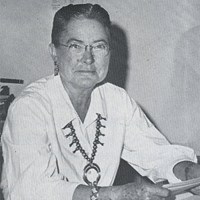 Bertha Dutton was an archeologist and ethnologist whose research focused on Mesoamerica and the southwestern United States. She participated in a field school at Chaco Canyon as a student, then led expeditions of Girl Scouts on digs in the southwest. Her long career at the Museum of New Mexico resulted in an expansion of the exhibit halls and public education programs. Bertha also served on the National Park Service Advisory Board.
Bertha Dutton was an archeologist and ethnologist whose research focused on Mesoamerica and the southwestern United States. She participated in a field school at Chaco Canyon as a student, then led expeditions of Girl Scouts on digs in the southwest. Her long career at the Museum of New Mexico resulted in an expansion of the exhibit halls and public education programs. Bertha also served on the National Park Service Advisory Board.
Florence Hawley Ellis
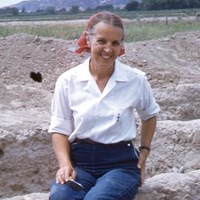 Florence Hawley Ellis broke new ground in archeology through use of dendrochronology, statistical analysis, chemical analysis, ethnohistory, and ethnoarcheology — often, all together. An advocate for women and equality, Florence taught and mentored students until her retirement. She is remembered as a tough teacher, a careful and thorough researcher, and a mentor to a generation of archeologists.
Florence Hawley Ellis broke new ground in archeology through use of dendrochronology, statistical analysis, chemical analysis, ethnohistory, and ethnoarcheology — often, all together. An advocate for women and equality, Florence taught and mentored students until her retirement. She is remembered as a tough teacher, a careful and thorough researcher, and a mentor to a generation of archeologists.
Frederica de Laguna
Dr. Frederica “Freddy” de Laguna was an influential archeologist and anthropologist who worked extensively throughout Alaska. Her trailblazing career spanned more than three decades. Dr. de Laguna’s research not only helped lay the groundwork for modern archeology in Alaska, it helped to open the male dominated fieldof archeology to women in the early 20th century.
J.C. and Virginia Harrington
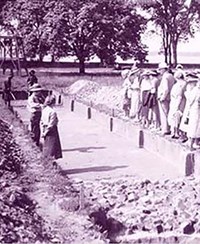 Jean Carl Harrington, often called “J.C.” or Pinky, and Virginia Sutton Harrington were two pioneering National Park Service archeologists. They excavated important archeological sites, established professional associations, traveled across the world, and even continued to excavate after retirement. J.C. and Virginia collaborated at Jamestown, and Fort Raleigh and Fort Necessity. The couple also helped to establish the Eastern National Park and Monument Association.
Jean Carl Harrington, often called “J.C.” or Pinky, and Virginia Sutton Harrington were two pioneering National Park Service archeologists. They excavated important archeological sites, established professional associations, traveled across the world, and even continued to excavate after retirement. J.C. and Virginia collaborated at Jamestown, and Fort Raleigh and Fort Necessity. The couple also helped to establish the Eastern National Park and Monument Association.
Jean McWhirt Pinkley
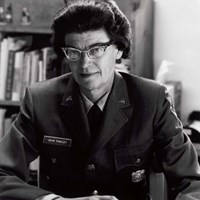 Jean McWhirt Pinkley joined the National Park Service after earning her Master’s degree in archeology in 1936. Her first position was at Mesa Verde National Park, where she was first a museum assistant and, later, chief of interpretation. Pinkley went on to work at Pecos National Monument and the Southwest Archaeological Center. Her distinguished career in archeology and the National Park Service was recognized with multiple awards.
Jean McWhirt Pinkley joined the National Park Service after earning her Master’s degree in archeology in 1936. Her first position was at Mesa Verde National Park, where she was first a museum assistant and, later, chief of interpretation. Pinkley went on to work at Pecos National Monument and the Southwest Archaeological Center. Her distinguished career in archeology and the National Park Service was recognized with multiple awards.
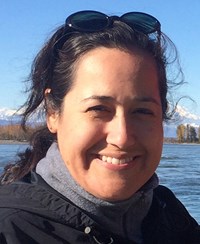 Jennifer Pederson Weinberger
Jennifer Pederson Weinberger
Jennifer Pederson Weinberger is the Cultural Resources Program Manager for the Alaska Region. Jennifer began her career with the NPS in 1995 as a seasonal archeological technician working on surveys and excavations at Hopewell Culture National Historical Park in southern Ohio. Jennifer continued at Hopewell Culture in a series of positions eventually becoming superintendent before joining the Alaska Regional Office in 2012.
Margaret Lyneis
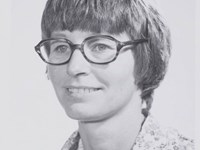 Margaret Lyneis was one of the few women present at the Tule Springs Fossil Beds “Big Dig” from 1962 to 1963, which aimed to test whether humans interacted with Late Pleistocene animals at this site as well as possible associations of Pleistocene animal fossils with charcoal and tools.
Margaret Lyneis was one of the few women present at the Tule Springs Fossil Beds “Big Dig” from 1962 to 1963, which aimed to test whether humans interacted with Late Pleistocene animals at this site as well as possible associations of Pleistocene animal fossils with charcoal and tools.
Mary Elizabeth “Betty” Yelm Kingman
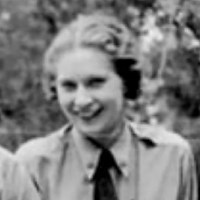
Mary Elizabeth “Betty” Yelm Kingman was one of the first women to make significant contributions to understanding the archeological past of Rocky Mountain National Park. Her next position was at Mesa Verde National Park, where she wore several hats. Betty published and delivered papers on archeology. After leaving NPS, Betty continued to participate in professional societies and worked as a science librarian until her retirement.
Ruthann Knudson
 Ruthann Knudson was an archeologist who specialized in Paleoindian studies. She touched seemingly every aspect of American archeology, often simultaneously and with great energy. She taught at colleges and universities; worked for private companies andfederal agencies; participated on professional and local societies, boards, and commissions; published reports and articles; and furthermore was an extraordinary artist, flint knapper, advocate for women, and friend.
Ruthann Knudson was an archeologist who specialized in Paleoindian studies. She touched seemingly every aspect of American archeology, often simultaneously and with great energy. She taught at colleges and universities; worked for private companies andfederal agencies; participated on professional and local societies, boards, and commissions; published reports and articles; and furthermore was an extraordinary artist, flint knapper, advocate for women, and friend.
Link to the article: https://www.nps.gov/articles/000/archeology-this-month-women-s-history.htm



 Bertha Dutton was an archeologist and ethnologist whose research focused on Mesoamerica and the southwestern United States. She participated in a field school at Chaco Canyon as a student, then led expeditions of Girl Scouts on digs in the southwest. Her long career at the Museum of New Mexico resulted in an expansion of the exhibit halls and public education programs. Bertha also served on the National Park Service Advisory Board.
Bertha Dutton was an archeologist and ethnologist whose research focused on Mesoamerica and the southwestern United States. She participated in a field school at Chaco Canyon as a student, then led expeditions of Girl Scouts on digs in the southwest. Her long career at the Museum of New Mexico resulted in an expansion of the exhibit halls and public education programs. Bertha also served on the National Park Service Advisory Board. Florence Hawley Ellis broke new ground in archeology through use of dendrochronology, statistical analysis, chemical analysis, ethnohistory, and ethnoarcheology — often, all together. An advocate for women and equality, Florence taught and mentored students until her retirement. She is remembered as a tough teacher, a careful and thorough researcher, and a mentor to a generation of archeologists.
Florence Hawley Ellis broke new ground in archeology through use of dendrochronology, statistical analysis, chemical analysis, ethnohistory, and ethnoarcheology — often, all together. An advocate for women and equality, Florence taught and mentored students until her retirement. She is remembered as a tough teacher, a careful and thorough researcher, and a mentor to a generation of archeologists.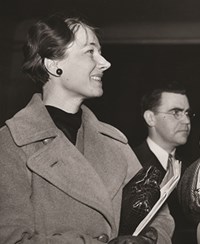

 Jean McWhirt Pinkley joined the National Park Service after earning her Master’s degree in archeology in 1936. Her first position was at Mesa Verde National Park, where she was first a museum assistant and, later, chief of interpretation. Pinkley went on to work at Pecos National Monument and the Southwest Archaeological Center. Her distinguished career in archeology and the National Park Service was recognized with multiple awards.
Jean McWhirt Pinkley joined the National Park Service after earning her Master’s degree in archeology in 1936. Her first position was at Mesa Verde National Park, where she was first a museum assistant and, later, chief of interpretation. Pinkley went on to work at Pecos National Monument and the Southwest Archaeological Center. Her distinguished career in archeology and the National Park Service was recognized with multiple awards.

















